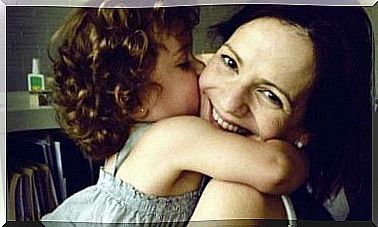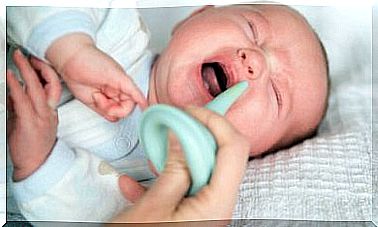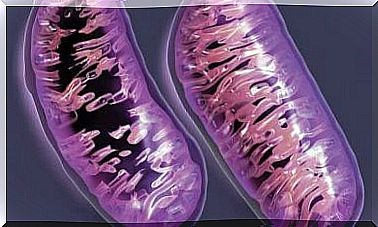How And When To Switch To Solid Food

Breast milk is the most important part of a baby’s diet for the first 6 months of life. If breast milk is not an option, substitute milk will replace it.
By the time your baby is around 4 months old, it will have doubled its birth weight – an average of around 7 kg. At this point, babies are ready to eat their first solid food. Of course, you should always follow your pediatrician’s instructions.
Solid Food: A Whole New World for Babies
The first piece of advice you need to start with solid foods is to take it slow. When you give your baby the first spoonful of food, they’ll often push the spoon out right away. That is normal.
They may not yet be able to slide the food back into their mouth to swallow. Remember, your child has never done this before!
Remember, your baby has never tried anything thicker than breast milk or formula. It will likely take some time to get used to the food.
If you find the food is too thick, try to liquefy it on the first few tries. You can try to offer thicker consistencies later.
Be patient, Rome wasn’t built in a day either
Start with just half a tablespoon of food. Talk to your baby throughout the process and give positive reinforcement. For example, say things like, “Doesn’t that look delicious?”
Remember, your baby doesn’t know what to do at first. Seems confused or wrinkled up their nose. He might play around with the food in his mouth or even refuse it altogether. If that happens, don’t be discouraged.
Another way to incorporate new foods into your baby’s diet for the first time is to offer your baby milk (breast milk or formula) at the same time. You can switch between half a tablespoon of food and half a tablespoon of milk.
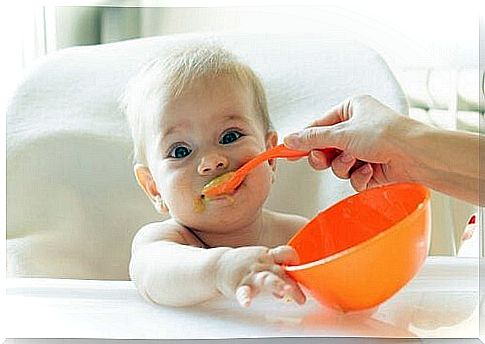
Once your baby has learned to eat their first solid food, it is a good idea to start introducing more foods. That way, you can be sure that your baby will get used to trying and eating all kinds of tastes.
Note that when introducing new foods, you should wait 5 to 7 days before introducing anything new. In this way you can recognize and identify possible food allergies or intolerances. For the same reason, you shouldn’t mix new foods together during this phase. Instead, you should start with single-component meals.
The fact that your baby has started to eat solid foods doesn’t mean it’s time to give up breastfeeding or bottle-feeding. Your baby’s supplementary diet should accompany milk intake, not replace it.
Start with grain
Fortified grains are good sources of iron and vitamin B. Grains also provide the calories your little one needs. Providing small amounts with breast milk or infant formula is a great way to introduce your baby to solid foods.
Remember that you should never put cereal in your child’s bottle as it poses a choking hazard. In addition, if your baby is habitually bottle-fed cereals on a regular basis without medical advice, your baby may gain too much weight.
It continues with vegetables and fruits
As a rule, parents start by introducing simple cereal products, that is, one cereal at a time.
There is no evidence that solid foods should be introduced in any particular order. However, we recommend starting with grains and then moving on to vegetables and fruits.
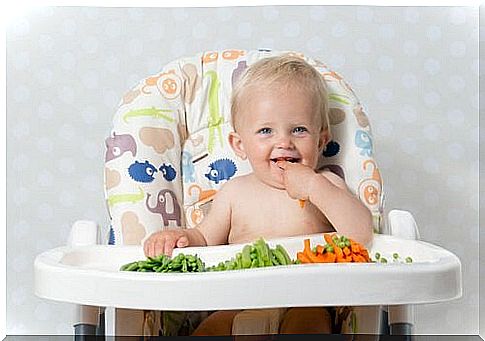
Getting your baby used to vegetables early on is a great idea. We all know that toddlers and older children don’t like vegetables. However, babies tend to be much easier to make friends with the vegetables – use this to your advantage!
Start offering your baby vegetables at lunchtime. Later, you can offer your baby pureed fruit as a morning or afternoon snack.
Every child has its own pace of development
Don’t force your child to eat when they cry or turn their head when you offer new food. If your little one repeatedly refuses to eat, it may be best to return to breast or bottle feeding again.
You can try to offer the food later. Getting your child to eat is a process that requires patience. Remember that your child will still get the nutrients they need from breast milk and / or infant formula.
In order for your child to have a healthy and varied diet in the future, it is important that your baby gets used to eating a wide variety of foods while they are still young. This is also the time to teach your child how to manage their appetite.
Don’t force your baby to eat more than he wants. Only in this way does it learn to recognize when it is full. And if your child has finished their meal and is still hungry, give them more food or offer to breastfeed them so they don’t stay hungry.



